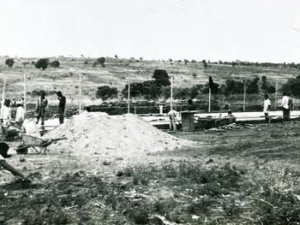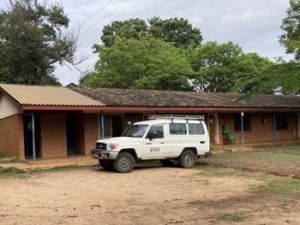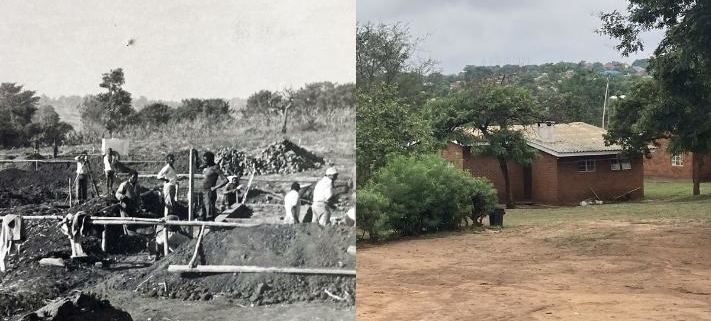Evolving styles of ministry in Africa
Do you like looking at old photographs? Probably you do. And probably you don’t. On the one hand, how heartwarming it can be to see those happy photos of your children when they were five years old. And imagine . . . now those kids of yours have children of their own! But on the other hand, oh my! That hairstyle! That cheesy mustache! Those silly bell-bottom jeans! Did I really look like that? Is it possible that the ‘me’ of yesterday was not as groovy as I thought I was?
A few days ago, I stumbled upon some old photographs. I thought they were fascinating. The year of the photos was 1981, and the place was Lilongwe, Malawi. One picture showed workers laying the foundation for the classroom of the Lutheran Bible Institute (LBI). Another picture showed the construction of Lutheran Bible Institute (LBI) student houses. The plan was to build a brand-new boarding school for the training of national pastors. All those buildings are still here, but things look very different today.
It got me thinking about our mission work in Africa. More specifically, it made me think how times have changed. Years ago, the measure of a missionary in Africa was how quickly he could change a tire. In the early days, almost all Africa missionaries drove out to the isolated village churches. They preached the gospel to the people, sometimes in a grass roofed church, sometimes underneath the mango tree. You would get a lot of flats driving those dirt roads, but an experienced missionary could pull off the old tire and pop on a new one faster than a pit crew at the Indianapolis Motor Speedway. In 1981, the very idea of building a fancy brick and mortar classroom for the training of national pastors – wow, that was groundbreaking stuff!

I still teach young Zambian and Malawian pre-seminary students in the very same classroom. And if you want my honest opinion, I still think it’s pretty ‘groovy.’ But things look different today. More and more, the missionaries of today are teaching in a Google Classroom, not a brick-and-mortar classroom. More and more, the measure of a missionary is not how quickly he can change a tire, but how quickly he can reboot his laptop to get the Zoom meeting up and running. Boarding schools? Today it’s ‘keyboarding’ schools. Today, missionaries are not just driving cars to the isolated villages of Zambia and Malawi.  They’re flying on commercial airlines to train pastoral students in places like Cameroon and Uganda, Ethiopia and Kenya.
They’re flying on commercial airlines to train pastoral students in places like Cameroon and Uganda, Ethiopia and Kenya.
So what should we say? Are old ways bad? Certainly not. You carefully groomed that cheesy mustache because that was the best thing for the time and place. That mustache and that hairstyle and the bell-bottom jeans are the things that got you noticed. Maybe they even caught the eye of that pretty, young lady who later became your wife. Certainly, it’s true that styles of ministry in Africa are constantly evolving, but our sister-churches in Africa number more than 60,000 baptized souls. God has blessed our efforts.
The old pictures remind us how quickly this world changes. But one thing never changes: Whoever believes in the Lord Jesus will be saved. As we enter into the year 2022, let’s double our efforts to preach the unchanging word of God, by whatever methods possible, because time is marching on, and “our salvation is nearer now than when we first believed” (Romans 13:11).
Written by Rev. Mark Panning, world missionary on the One Africa Team.
WELS Missions
Learn about the ministry work of WELS Missions.
SUPPORT MISSIONS
Support the ministry work of WELS Missions.
[fbcomments num=”5″]





